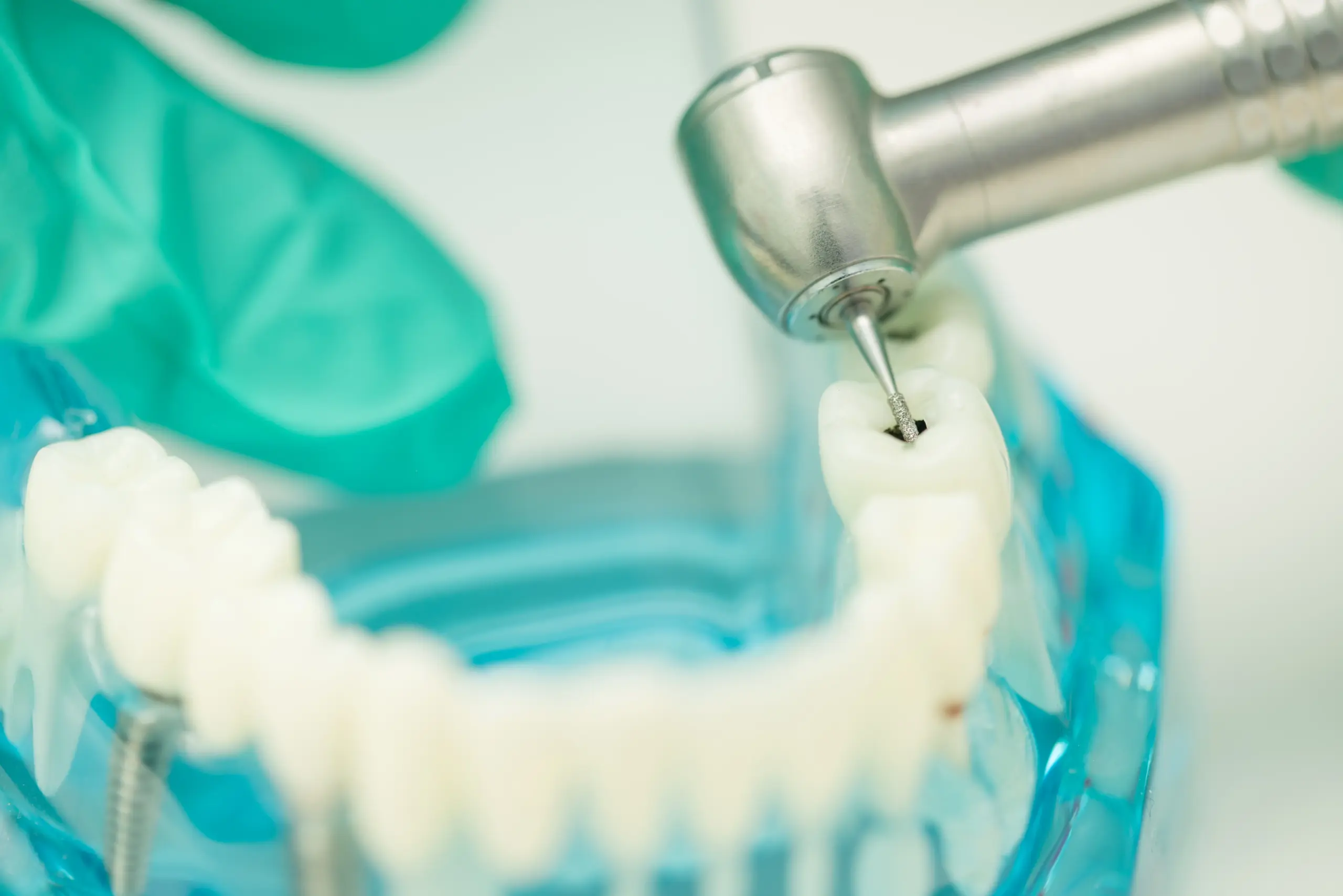It often starts with something subtle, a twinge with hot tea, food getting stuck, or a sharp ache while chewing. These minor annoyances could be early signs that your tooth needs a filling.
If you’re unsure how to know if you need a filling, recognising symptoms early can help you avoid more extensive dental procedures.
What Is a Dental Filling and Why Is It Necessary?
A dental filling restores a damaged tooth to its natural function and shape. It’s typically used when decay or trauma has compromised the enamel, leaving the inner tooth vulnerable to further harm.
Why fillings matter:
- Protect exposed tooth structures from bacteria and infection
- Prevent the progression of tooth decay
- Restore chewing function and comfort
- Avoid more invasive treatments like root canal therapy or crowns
According to the World Health Organization, untreated tooth decay affects over 2.5 billion people globally.
How to Know If You Need a Filling: Symptoms and Signs
Tooth decay rarely arrives all at once. It usually gives off small clues. Paying attention to these signs can help you act early.
Common indicators you might need a filling:
- Tooth pain when eating or applying pressure
- Sensitivity to hot, cold, or sweet foods
- Dark spots or visible pits on a tooth
- Food gets trapped between teeth frequently
- Cracked or broken filling already in place
- Fraying dental floss on use between specific teeth
- Discolouration of a single tooth (brown, yellow, or grey)
Why these symptoms matter:
- A toothache often suggests a cavity reaching deeper layers
- Sensitivity may point to exposed dentin or enamel erosion
- Visible damage often confirms structural decay or early cavity formation
- Repeated floss tearing can signal rough decay or a filling needing repair
If you experience one or more of these, it’s wise to book a dental examination. Left untreated, minor decay can quickly lead to nerve damage or abscesses.
Causes of Tooth Decay That Lead to Fillings
Cavities form when bacteria in plaque produce acids that dissolve enamel. Over time, this damage spreads, eventually requiring a filling.
Key causes of dental decay:
- Poor oral hygiene habits
- Frequent sugary snacks and drinks
- Lack of fluoride protection
- Dry mouth due to medications or dehydration
- Acid reflux or frequent vomiting
- Clenching or grinding teeth (bruxism)
Types of decay that may need fillings:
- Coronal decay – On the top surface or between teeth
- Root decay – Along the exposed roots of teeth, especially in older adults
- Recurrent decay – Around existing fillings that are breaking down
Acting early can limit decay to the enamel. Once it reaches the dentin or pulp, more invasive procedures may become necessary.
Why You Shouldn’t Ignore These Signs
Tooth decay doesn’t reverse itself. Avoiding care can turn a simple filling into more serious treatment.
Risks of delaying treatment:
- Increased pain and tooth sensitivity
- Infection requiring root canal treatment
- Tooth fracture or structural failure
- Tooth extraction as a last resort
According to NHS Inform, advanced decay that reaches the tooth’s nerve often leads to root canal therapy or removal.
How a Dentist Confirms Whether You Need a Filling

While symptoms offer a strong hint, only a dentist can confirm if a filling is necessary. They use diagnostic tools to assess areas that aren’t visible or painful yet.
Diagnostic methods:
- Visual inspection – Looking for pits, fractures or discolouration
- Tactile testing – Using instruments to detect soft spots
- Bitewing X-rays – Revealing hidden decay between or under teeth
At Birchgrove Dental, a thorough check-up includes a detailed assessment and diagnostic imaging when needed. Their comprehensive dental exams support early intervention using a conservative, preventive approach.
Should You Get a Second Opinion?
It’s common to feel unsure when a new filling is suggested, especially if you’re not experiencing pain. Seeking a second opinion can be helpful.
What to ask for when unsure:
- Copies of X-rays or images
- Explanation of the decay’s location and severity
- Whether the issue can be monitored rather than treated immediately
Some situations allow for “watch and wait” monitoring, especially with early-stage enamel erosion. But deeper decay typically calls for immediate restoration.
Types of Fillings and Their Pros and Cons
Different materials suit different situations. Your dentist will recommend the best one depending on the tooth’s location and your personal preferences.
Common filling types:
| Type | Benefits | Limitations |
| Composite Resin | Tooth-coloured, aesthetic, bonds well | Less durable on large back teeth |
| Amalgam | Very durable, cost-effective | Silver colour, contains mercury |
| Ceramic (porcelain) | Highly aesthetic, stain-resistant | More brittle and costly |
| Glass Ionomer | Releases fluoride, good for children | Wears down faster than composite |
Composite fillings are the most common for visible teeth due to their natural appearance.
What Happens During a Filling Appointment
If you’re wondering how to know if you need a filling, you may also be curious about the procedure itself. Fortunately, it’s usually quick and relatively painless.
What the process involves:
- Local anaesthetic is applied
- The decayed portion of the tooth is removed
- The area is cleaned and dried
- Filling material is shaped, cured, and polished
- The bite is adjusted for comfort
Appointments typically take 30–60 minutes. Some sensitivity after treatment is normal and should resolve within a few days.
When a Filling Isn’t Enough
Sometimes decay or damage is too extensive for a traditional filling. Your dentist may suggest other restorative options to strengthen the tooth.
Alternative treatments may include:
- Inlays or onlays – For large cavities on molars
- Crowns – When much of the tooth is compromised
- Root canal treatment – If infection has reached the pulp
- Tooth extraction – As a last resort, if the tooth can’t be saved
This underscores the importance of early action. A filling caught in time can prevent the need for more complex procedures.
How to Prevent Future Fillings
Once a filling is done, keeping your mouth healthy helps avoid future decay. Consistency is key.
Best practices for prevention:
- Brush with fluoride toothpaste twice a day
- Floss or use interdental brushes daily
- Rinse with fluoride mouthwash if recommended
- Avoid sugary snacks and acidic drinks
- Drink water throughout the day to stay hydrated
- Book regular dental check-ups
- Ask your dentist about fissure sealants for added protection on molars
A combination of good home care and professional support keeps your teeth strong for the long haul.
Final Thoughts
Knowing how to know if you need a filling is all about spotting the signs – pain, sensitivity, food traps, and discolouration. These small symptoms often point to something that, if left untreated, becomes more complicated and expensive.
At Birchgrove Dental, our team is dedicated to gentle, patient-first care. Whether you’re experiencing symptoms or it’s simply time for your routine check-up, we’re here to support your long-term oral health.
Book your dental assessment today and let us help you stay one step ahead of tooth decay.





